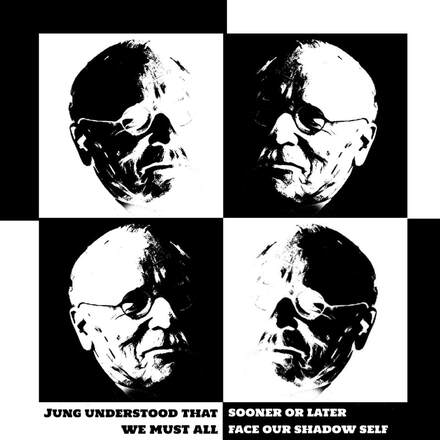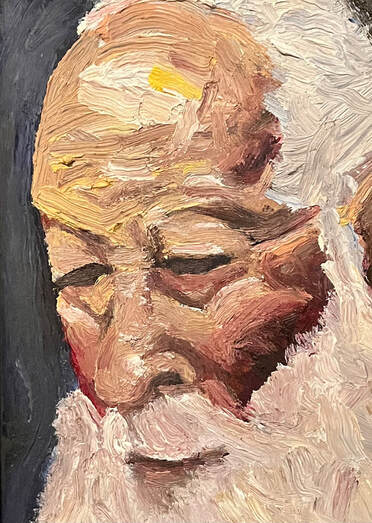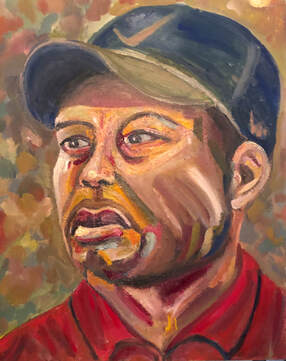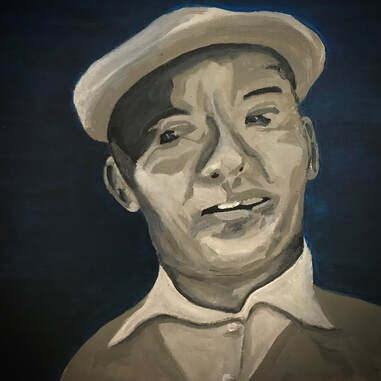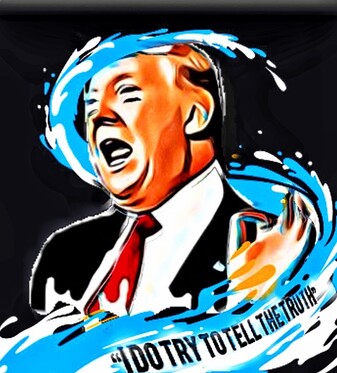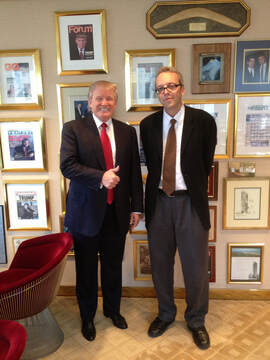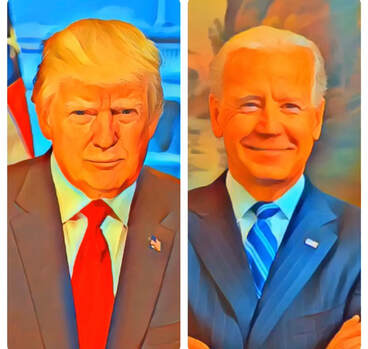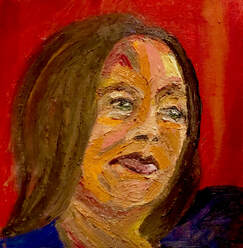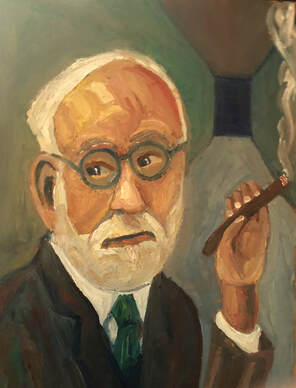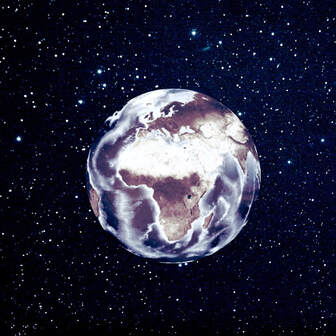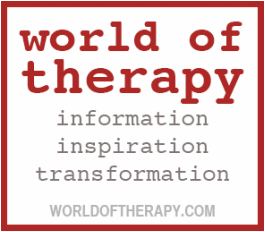
So our big date with democracy has finally been set: There will be a general election on July 4.
Who will you vote for?
After 14 years of Tory misrule, Britain has lost its way. The old flag lies tattered and torn. The NHS is on life support. The welfare state has been slashed. Scotland is backing away, trying to secede, and who could blame them? With unprecedented levels of poverty, inequality and despair, we are suffering a massive collective hangover.
Did it really happen?
We groan as the memory of it all comes flooding back. David Cameron, the Bullingdon Club pig fucker; Brexit, a massive collective act of self-harm, the gift that keeps on taking. Theresa May's moonwalk. Oh no. The horror, the horror.
Boris Johnson and his “chumocracy,” partying through the Covid-19 lockdown, ignoring his own rules which the rest of us followed; handing out favours, honours and bogus contracts to pals; fumbling his notes while chuntering about Peppa Pig World; the barefaced lies (to parliament, the nation and even the Queen), buffoonery and bad hair days.
Liz Truss going on about cheese then swerving the economy sharp right, straight off the White Cliffs of Dover, shrieking maniacally as the whole rickety charabanc and her career plummet, crash and burn.
The laughing stock of the world.
The latest poll of voting intentions puts the Labour Party at 46%, with the Conservatives on 21% (YouGov, 2024). The approval rating for the government is currently 15% (YouGov, 2024).
Morale is low. The United Kingdom feels disunited, stressed, febrile.
To criticise the state of Britain is not to hate it. Quite the contrary. Often the fiercest critics have the purest hearts.

According to one paper (Jost, Federico and Napier, 2009), the two core aspects of a person’s political stance are their attitude to change versus stability, and to equality versus inequality. Pro-change pro-equality types tend to be left leaning; those who like the status quo, including existing power structures, hierarchies, and traditional ways of doing things, are more likely to vote Conservative.
Researchers claim that “openness” is a good predictor of being a leftie, while those on the other side of the aisle tend to score higher on “conscientiousness, order, structure, and discipline.” Rather amusingly, Carney et al (2008) claim that these personality differences are apparent even in people's homes: The bedrooms and offices of Conservatives contain “more items relating to conscientiousness, such as postage stamps and cleaning supplies, whereas liberals’ rooms contain more items relating to openness, such as travel books, music, and art supplies.”
Beyond these rather ridiculous stereotypes however is the more enduring idea that leftie “bleeding heart” liberals are more empathic than crusty conservatives, and research partially—though not comprehensively—supports that. Erikson and Tedin (2015, p71) conclude that “conservatives consider people inherently unequal and worthy of unequal rewards; liberals are egalitarian.”
Jonathan Haidt, author The Righteous Mind: Why Good People are Divided by Politics and Religion, says it’s true that liberals tend to see the world largely through the lens of “care and fairness.” “Liberals turn out to be more disturbed by signs of violence and suffering,” he writes. They are “most concerned about the rights of certain vulnerable groups…and they look to government to defend the weak against oppression by the strong. Conservatives, in contrast, hold more traditional ideas of liberty as the right to be left alone” (2012, p212).

Inequality
When the poet Percy Bysshe Shelley wrote 200 ago that the rich get richer and the poor get poorer, he meant it as a lament, not a policy statement.
In the past, Tory MPs might have occasionally at least pretended to care about unequal playing fields and human suffering, offering slogans like “levelling up”, “trickle down” or “compassionate conservatism.”
But now there’s almost a sense of pride in their commitment to inequality. In 2022, current PM Rishi Sunak openly bragged about reversing old policies “that shoved all the funding into deprived urban areas.”
Power reproduces itself. Modern Conservatism has moved beyond a simple embrace of free markets into a kind of protection racket for the wealthy. In his book The Richer, The Poorer: How Britain Enriched the Few and Failed the Poor (2021), Stewart Lansley describes the advent of “extractive capitalism”—an economic model that “is heavily geared to enrichment of the few via mechanisms that extract an excessive share of the gains from existing corporate and financial wealth, and from the creation of new wealth, in ways which have significant economic, social and community side-effects.”
• We are in the midst of a cost of living crisis—actually the biggest two-year drop in living standards since records began in 1955 (Office for Budget Responsibility, 2022). Meanwhile, the corporations that supply gas and electricity to Britain’s homes, companies like Eon, Scottish Power, British Gas, EDF, Shell, Equinor, ExxonMobil, BP, reported record profits of such enormity that they must be laughing all the way to the bank (Independent, 2024). The joke is on us.
• More than one in five people in the UK are now living in poverty, including more than 4 million children (Joseph Rowntree Foundation, 2024). Levels of absolute (as opposed to relative) poverty have risen to 17%(UK Parliament).
• The government’s policy of austerity from roughly 2011-2019 slashed welfare spending, local government services and investment and inevitably hit the most socioeconomically disadvantaged the hardest. A 2017 United Nations report for example concluded that the UK government has “totally neglected” disabled people, precipitating a “human catastrophe” (Disability Rights UK, 2017).
• In public spending on welfare as a percentage of GDP, the UK now ranks behind: France, Belgium, Finland, Italy, Denmark, Austria, Sweden, Germany, Norway, Spain, Greece, Portugal, Luxembourg, Slovenia, Poland (OECD, 2023).
• Estimates on the degree to which Brexit has shrunk the UK economy range from 4-6% (eg. Office for Budget Responsibility, Goldman Sachs, National Institute of Economic and Social Research, Reuters, Bloomberg)—well over £100 billion a year. The latest opinion poll shows that 56% of Brits now think Brexit—cutting ties with our biggest trading partner—was a mistake.
• Boris Johnson’s successor was the leftie-turned-rabid-rightie Liz Truss, whose disastrous reverse-Robin Hood minibudget cost the UK a reported £30 billion and, after just 49 days, her job, making her the shortest-serving PM in history.
• The UK already has one of the highest levels of income inequality in the western world: 31st in the ranking of 39 OECD nations (OECD, 2024). In the late 1970s, the top 5% of British households had an income four times greater than the poorest 5%; today that gap grown from four times bigger to 10 times bigger. Inequality in the UK now costs us an estimated £106.2 billion a year (Equality Trust, 2023). And it is expected to reach a record high in the UK in 2027/28 (Resolution Foundation, 2023). Inequality has grown in most countries in the past three decades. We live in a deeply divided world, where the richest 10% of the global population currently take home 52% of the income and own 76% of all wealth. The poorest half of the global population earn 8% of income and own 2% of wealth (World Inequality Report, 2022).
• Meanwhile, the combined wealth of the 350 people on the latest Sunday Times Rich List rose from £653 billion to £795 billion, more than the GDP of Poland. The prosperity of the few feeds off the austerity of the many. Balzac wrote that behind every fortune is a crime. The Sunaks, incidentally, saw their amassed fortune rise by more than £120 million over the past year to £651 million. They are 245th on the Sunday Times list, ahead of King Charles III.

The great American myth is that you can be anything you want as long as you want it enough and work hard enough. It’s not true by the way, but it is even less true in Britain where we are restrained by the weight of history, tradition and class. If you are born on a lower rung of the social ladder, the most likely scenario is you’re going to stay there or thereabouts. These days, there isn’t even a ladder anymore. The rich people at the top took all the rungs. A recent Institute for Fiscal Studies report shows that social mobility in the UK is at its lowest ebb than at any time in the last half century. And it’s predicted to fall even further (Guardian, 2023).
This is perhaps one of the most important determinants of voter psyche: How a person sees themself in comparison to “the other.”
There is clearly enormous variation in the circumstances into which we are each born. Bordieu’s ideas of different types of capital (1985) and his concept of “habitus” are useful—we all carry enduring, self-perpetuating, internalised and largely unconscious social and cultural ideas and knowledge about what is and is not expected or possible for “someone like me.” Many people who are born into good circumstances, however, often have little awareness of their own privilege. Trying to explain white male privilege for example to some privileged white males can be like trying to explain water to fish. Wrote the Herman Melville: “Of all the preposterous assumptions of humanity over humanity, nothing exceeds most of the criticisms made on the habits of the poor by the well housed, well-warmed, and well-fed.”
The well-fed often believe they “deserve” their success because they have “worked hard.” They might believe that they are good, while “the other” is bad and therefore deserves whatever he or she gets. There are endless projections heaped upon strangers, especially brown strangers: They are lazy, feckless, corrupt, perverted, stupid, criminal, violent, immoral, benefit cheaters, druggies, rapists, murderers, terrorists or any number of other Daily Mail/Telegraph/Spectator slurs and stereotypes. Such propaganda and manipulation of messages can turn respect into fear loathing. It can turn neighbour against neighbour. It can push politics to the far-right, towards authoritarianism and worse (eg. Vasilopoulos et al, 2019). Malicious generalisations about “the other” to facilitate war, imperialism and subjugation has been around a long time; “Islamophobia” is but one example. Writes Salter: “The ‘barbarian’ represents a rhetorical well from which politicians have drawn throughout the twentieth century and from which they still draw” (2002, p4)

Encounters with “the other”—often through education, work or travel—reveal that all the damaging, cruel and unfair blame-the-victims characterisations are nothing but a load of hot air, and we understand that we are they, and they are we.
Racism
Britain prides itself on being a “tolerant” nation. But even if that were true, is that the best it can do? It means British people disapprove of “others”—people they don't know but don’t like the look of—but put up with them. What a miserly, discriminatory aspiration it is to be merely “tolerant.”
According to Wikipedia: “Racism has a long history in the United Kingdom and includes structural discrimination and hostile attitudes against various ethnic minorities. The extent and the targets of racism in the United Kingdom have varied over time. It has resulted in cases of discrimination, riots and racially motivated murders.”
In the year ending March 2023, there were 145,214 hate crimes recorded by the police in England and Wales,70 percent of which were racially motivated (Gov.uk). This more than a threefold increase in a decade, though this may be partially to do with better police detection and reporting rates than actual increases in hate. Antisemitism in the UK reached record levels following the shocking Hamas massacres in October and the shocking response (BBC, 2024).
Poverty disproportionately impacts minority ethnic people in the UK—Bangladeshis have the highest poverty rate (65%); white Britons have the lowest (20%). Shocking fact: Almost half of all children of ethnic minorities in the UK are living in poverty.
The rate of Covid deaths for black males was 3.3 times greater than that for white males of the same age, and for black females it was 2.4 times greater than for white females. Black people are 5 times more likely to be subject to stop and search as white people, 5 times more likely to be sectioned, and 2.4 times more likely to be arrested.
As of last October, there was just one black CEO in the FTSE100 companies; 93% of small and medium businesses in the UK have white leader(s); 93% of court judges are white (1.1% are black); 92% of police are white (1.3% are black); 96% of headteachers, 95% of deputy headteachers and 90% of all teachers in the in the UK are white (figures from Gov.uk, 2024).
In living memory, London was the capital of the biggest empire the world has ever seen. This was the product of a brutal land grab, a mass invasion, occupation and enslavement of a quarter of the earth’s people. Britain attempted to justify such violence with a great deal of racist propaganda, bogus rhetoric and erroneous “science”—these old prejudiced messages of white supremacy, eugenics, “race” and “caste” still endure in cobwebbed recesses of the psyches of some Britons. There has never been any kind of truth and reconciliation process for the victims; the royal family has never apologised. There’s an awful lot of inherited wealth in the UK that is drenched in the blood of subjugated people from far-flung foreign fields. “Commonwealth” is perhaps the biggest misnomer in history.
Clearly these more inglorious aspects of Britain’s past cast a long shadow.
Mental health
There has been a huge rise in mental ill-health under the Conservative government. The figures are particularly shocking for young people, especially girls. The percentage of young people (18-24) reporting symptoms has risen now to 34% —41% of women and 26% of men (Resolution Foundation, 2024). Rates of self-harm amongst young women have tripled since 1993, and today's young women are three times more likely than young men to experience post-traumatic stress disorder. In 2018-19, 24% of 17-year-olds reported having self-harmed in the previous year, and 7% reported having self-harmed with suicidal intent at some point in their lives (Young Minds, 2024).
Why so much unhappiness?
Governments generally try to avoid any responsibility for the wellbeing of their citizens. Mental illness is hidden, criminalized or framed as a problem located within individuals themselves rather than in the brutal, dysfunctional societies they have created. There is a growing understanding that psychological distress is largely psychosocially determined. The famous “antipsychiatrists” like R. D. Laing and Thomas Szasz regarded “mental illness” as a myth—a sane response to an insane world. (All therapy by the way is political. The therapist who tends to blame the victims of oppression for their unhappiness are complicit in the oppression.)
Overall there is a sense of hopelessness. I hear these stories every day from clients.
According to The Inner Level: How More Equal Societies Reduce Stress, Restore Sanity and Improve Everyone's Well-being (Wilkinson & Pickett, 2020), when wealthy countries are compared, the prevalence of mental illness and higher levels of “status anxiety” are correlated with greater levels of inequality. A study of 122 countries found a strong correlation between inequality and male depression, while women were found to be almost twice as likely as men to suffer from depression (Yu, 2018).
One definition of depression is “embodied inequality” (Cromby, 2014).
David Smail writes: “Distress arises from the subjection of the embodied person to social forces over which s/he has very little control” (1997, pviii). The problem, he adds, is that “between us, we have managed to create a society in which cruelty has got out of hand” (1997, p 16).
Radical centrism
F. Scott Fitzgerald famously wrote: “The test of a first-rate intelligence is the ability to hold two opposing ideas in mind at the same time and still retain the ability to function.”
Life and death. Love and hate. Man and woman. Good and bad. Black and white. Believer and nonbeliever. Stay and go. It is in the tension that exists between two polarities that all growth, creativity, originality and birth takes place. Tension is the petri dish of all things yet to be.
Here’s another polarity: capitalism versus socialism. It is in our nature to want to compete, and to win. But the “law of the jungle” can be brutal. And sharing and kindness and empathy for the suffering of others are part of the human condition too. We don’t live in the jungle. Socialism seeks to create fair-minded societies with low levels of inequality, free schooling and healthcare, equal opportunities, outreach programs, affirmative action and providing for people who happen to be disabled, disturbed or destitute, not just because morally it’s the right thing to do, but also because it builds a more diverse, fairer, richer and better society.
The two-party system inevitably polarises the debate. We know that extremes of either approach—totalitarianism or communism—are simply untenable and undesirable. But democracy is not a choice between right and left; capitalism and socialism. The former is perhaps necessary, inevitable even, and can be an engine of growth, but elements of socialism are needed too to make it not an engine that crushes the human spirit, but one that is fair, an engine for everyone can believe in, contribute to, and benefit from.
Books like The Spirit Level: Why Equality is Better for Everyone (Wilkinson & Pickett, 2010), 23 Things They Don’t Tell You About Capitalism (Chang, 2012), Capital in the Twenty-First Century (Piketty, 2014) and In it Together (OECD, 2015) argue that high levels of inequality impede the creation of fair-minded functioning societies and are ultimately bad for everyone.
“Inequality and Politics,” a public opinion survey of 13 European countries plus the United States, found that the vast majority of respondents do not believe their governments act in their own best interests, or in the interests of the majority, but instead their motivations are skewed toward wealthy types and corporations—they believe that government should take measures to reduce differences in income levels—"supporters of redistribution outnumber opponents of redistribution by a wide margin" (Pontusson et al, 2020).
Similarly, in his book A Theory of Justice, John Rawls demonstrates through his “original-position” thought experiment that if people meet to create an ideal imaginary society—one where they don’t have any prior knowledge about the circumstances they would be born into—they will generally opt for a fair, redistributive political and economic system that treats all well, maximising the prospects of the least well-off (1971/1999).
Most people are broadly centrist. Instead of seeing capitalism and socialism as being in opposition to each other, or opting for a bland LibDem compromise that satisfies neither, perhaps it is in having a serious commitment to both—and understanding the power that emerges from successfully integrating them—that real progress can be made. A radical centrism.

If you want to concentrate wealth and opportunity into an ever-smaller privileged elite, further slash provisions for the rest, and maintain unfair and grossly unequal power structures between different groups of British people, then you really should vote Conservative.
The older and the less educated you are, the more likely you are to do so.
Labour tends to win the young vote; retirees are more likely to be true blue. In 1997, when Tony Blair comprehensively defeated John Major, only 27 percent of 18-24-year-olds voted Conservative. According to The Economist (2024), this curious example of human life—the Young Tory—has now shrunk to about 8 per cent.
Labour Party leader Keir Starmer is the odds-on favourite to become the next Prime Minister, and by a huge margin (Oddschecker currently shows Starmer at 1-to-6; Sunak is 7-to-1).
On paper there is much that is admirable. He grew up in a genuinely working class family, where money was always tight. He is one of those rare souls to break free of the constraints of his habitus. He worked hard. He was dedicated. He was the first person in his family to go to University. He studied law at Leeds. He became a lawyer—not to get rich but to try to make the world a better, fairer place. He turned his back on wealth and instead chose cases on merit and principle. He cared about truth, human rights, social justice, ordinary people. He defended convicts facing the death penalty in a number of Caribbean countries. He rose up through the ranks of his profession to become Director of Public Prosecutions and head of the Crown Prosecution Service. He did this simply by being good at his job. He entered politics and became a Labour MP in 2015.
He’s not yet entirely comfortable in the spotlight. He’s rather wooden, grey, lacking in charisma. He’s the politician equivalent of the magnolia-painted wall: He makes careful utterances that often are designed not to offend anyone yet end up offending everyone. It’s hard to know what he really believes. Sometimes he comes across like some computer-generated avatar, or an animatronic Max Headroom. If he wins the election, the tabloids will continue to say mean things about him. He’s a real nowhere man. An empty taxi pulled up to No. 10 Downing Street and Keir Starmer got out. Keep the grey flag flying. And so on.
He has had plenty of criticism from both sides of the house. He makes promises and reverses them. We don’t know if he’s a kind of leftie John Major (boring, average, but relatively safe), a Tony Blair (a Tory in a New Labour suit), or something else entirely. Some say he’s actually quite radical and will bare his teeth once (and if) elected. Conspiracy theorists probably say he’s like any politician, probably a puppet, answerable not to the British public but to some invisible evil cabal hellbent on global domination. Maybe it is all just a sham, an appearance of democracy, a choice between two empty suits both of whom will have their domestic policy directed by the City and their foreign policy by the White House.
Regardless, after years of slapstick, pantomime politics, Starmer feels like a decent, competent and grown-up person to run the country for the benefit of the many rather than the few.
A fairer, more humane, more soulful society is possible, but to get there, says Shelley, we “must imagine intensely and comprehensively” and put ourselves “in the place of another and many others” such that “the pains and pleasures of our species” become our own.
He says: “The great instrument of moral good is the imagination.”
BBC (2024). UK antisemitic hate incidents hit new high in 2023, says charity
Bloomberg (2024). Goldman Says UK Economy Suffering ‘Long-Term’ Cost of Brexit
Bourdieu, P. (1985) ‘Forms of capital’ in J. Richardson (Ed.), Handbook of Theory of Research for the Sociology of Education. Greenwood Press, pp. 241–258
Carney, D. R., Jost, J. T., Gosling, S. D., & Potter, J. (2008). The secret lives of liberals and conservatives: Personality profiles, interaction styles, and the things they leave behind. Political Psychology, 29, 807–840
Chang, H.-J. (2012). 23 Things They Don’t Tell You About Capitalism. Penguin
Cromby, J. (2014). Depression: Embodying social inequality. Journal of Critical Psychology, Counselling and Psychotherapy, 14(3), 179-189
Disability Rights UK (2017). A human catastrophe – New UN condemnation for UK human rights record.
Equality Trust (2023). Equality Trust Releases Cost of Inequality Report
Erikson, R. S., & Tedin, K. L. (2019). American public opinion: Its origins, content, and impact. Routledge.
Goldman Sachs (2023). Will the UK economy keep up with the rest of Europe in 2024?
Gov.uk (2024). Ethnicity facts and figures.
Guardian (2023). UK social mobility at its worst in over 50 years, report finds
Haidt, J. (2012). The Righteous Mind: Why good people are divided by politics and religion. Vintage
Independent (2024). Energy companies rake in ‘eye-watering’ £1bn a week as British families struggle in cost of living crisis
Joseph Rowntree Foundation (2024). UK Poverty 2024
Jost, J. T., Federico, C. M., & Napier, J. L. (2009). Political ideology: Its structure, functions, and elective affinities. Annual Review of Psychology, 60, 307–337
Lansley, S. (2021). The Richer, The Poorer: How Britain Enriched the Few and Failed the Poor: A 200-Year History. Policy Press
National Institute of Economic and Social Research (2024). Measuring the permanent costs of Brexit
OECD (2015). In It Together. OECD
OECD (2023). Social Expenditure Database
OECD (2024). Income inequality (indicator).
Office for Budget Responsibility (2022). The outlook for household income and consumption
Office for Budget Responsibility (2024). Brexit analysis.
Piketty, T. (2014). Capital in the Twenty-First Century. Harvard University Press
Pontusson, J., Giger, N., Rosset, J., & Lascombes, D. K. (2020). Introducing the inequality and politics survey: preliminary findings (Vol. 16). Unequal Democracies Working Paper
Rawls, J. (1999). A Theory of Justice. Harvard University Press
Resolution Foundation (2023). The Living Standards Outlook 2023
Resolution Foundation (2024). We've only just begun: Action to improve young people’s mental health, education and employment
Reuters (2024). London mayor says Brexit has cost UK over $178 billion so far
Salter, M. (2002). Barbarians and Civilization in International Relations. Pluto
Smail, D. (1997). Illusion and Reality: The Meaning of Anxiety. Constable
Statistica (2024). Do you approve or disapprove of the Government’s record to date?
Sunday Times (2023). Sunday Times Rich List 2023
UK Parliament (2023). Poverty in the UK: Statistics
Vasilopoulos, P., Marcus, G. E., Valentino, N. A., & Foucault, M. (2019). Fear, anger, and voting for the far right: Evidence from the November 13, 2015 Paris terror attacks. Political Psychology, 40(4), 679-704
Wilkinson, R. & Pickett, K. (2010), The Spirit Level: Why Equality is Better for Everyone. Penguin
Wilkinson, R. & Pickett, K. (2020). The Inner Level: How More Equal Societies Reduce Stress, Restore Sanity and Improve Everyone's Well-being. Penguin
World Inequality Report (2022). Executive Summary
YouGov (2024). Voting Intention: Con 21%, Lab 40% (26-27 Mar 2024)
Young Minds (2024). Mental health statistics.
Yu, S. (2018). Uncovering the hidden impacts of inequality on mental health: a global study. Transl Psychiatry 8, 98

